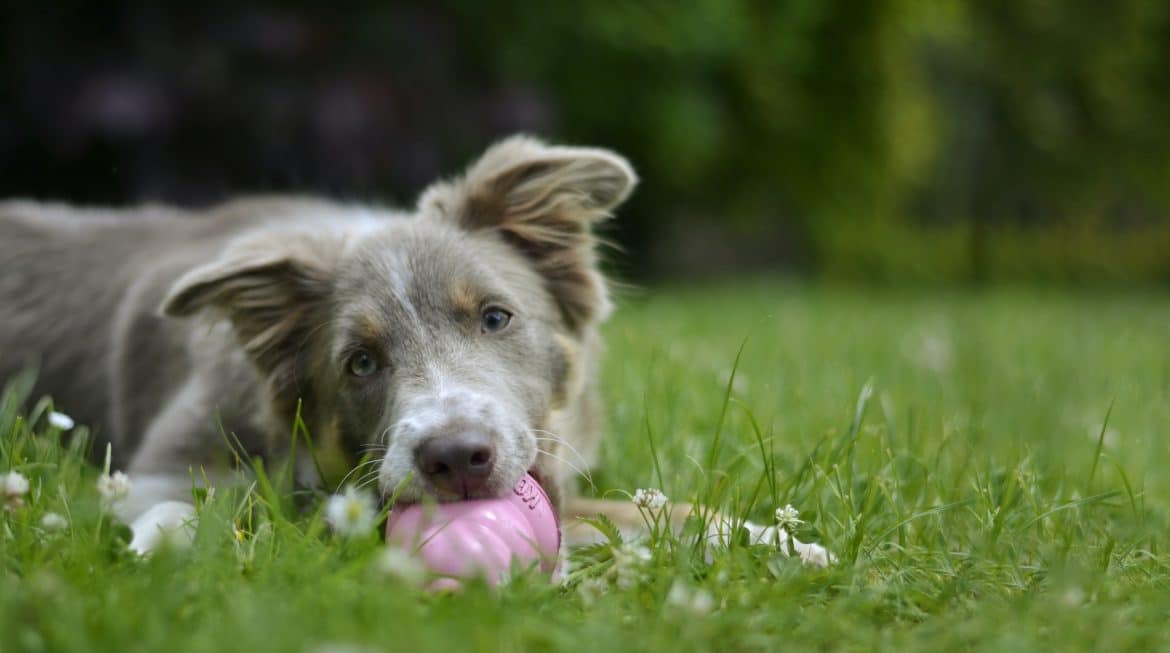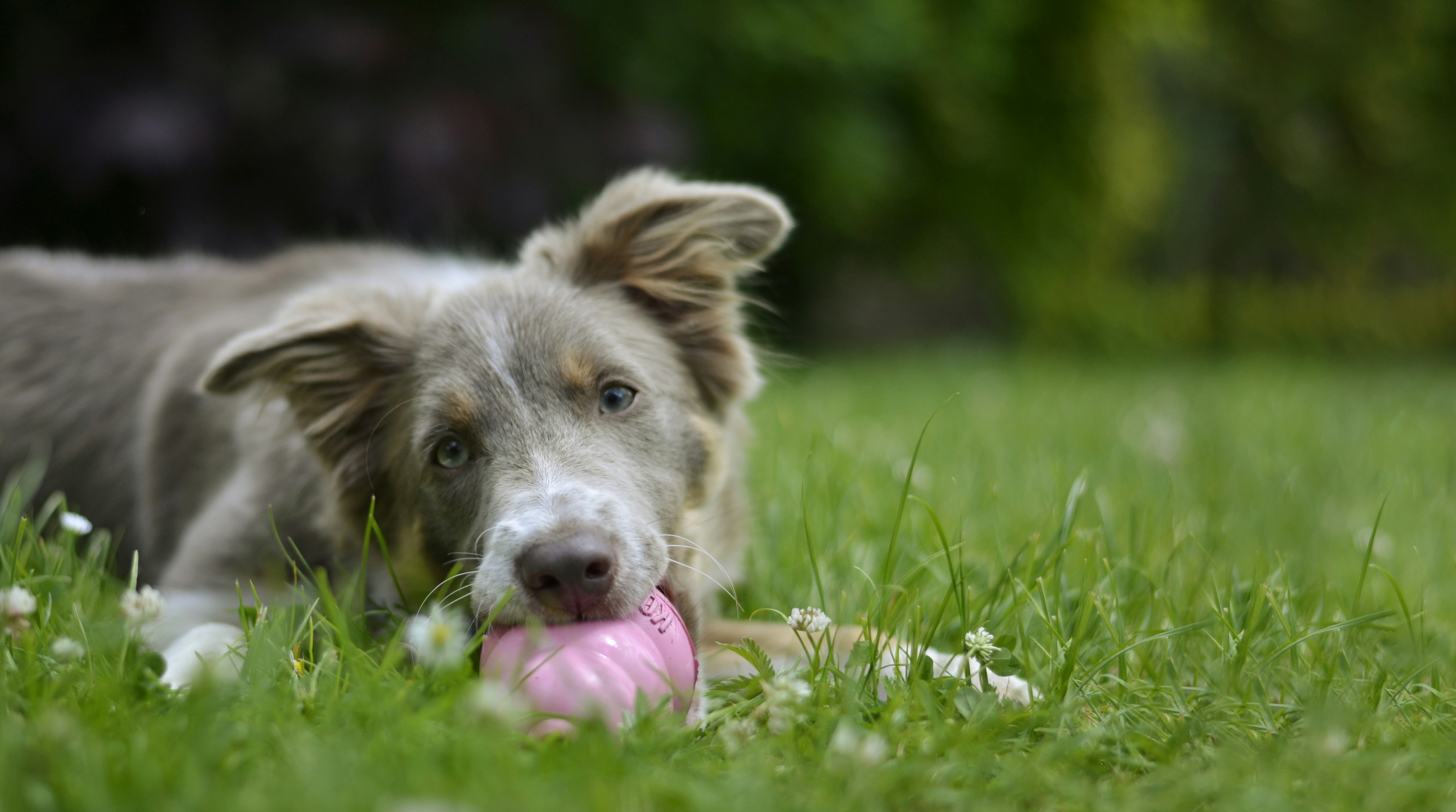Step into the intriguing world of our furry friends as we uncover the irresistible allure behind a seemingly simple act - why dogs love chewing on sticks. From the satisfying crunch to the primal instinct it taps into, discover the fascinating reasons behind this age-old canine behavior. Take a closer look as we delve into the captivating habits of our four-legged companions and explore the unexplainable magnetism between dogs and sticks. Join us on this exploration, where you'll gain a deeper understanding of the canine psyche and the profound joy they derive from a humble piece of wood.

This image is property of images.unsplash.com.
The Instinctual Behavior of Dogs
The ancestral wolf connection
Dogs have innate behaviors that can be traced back to their ancestral roots as wolves. Just like their wild relatives, dogs have a natural instinct to explore their environment and engage in various activities to fulfill their physical and mental needs. Chewing on sticks is one of these instinctual behaviors that has been ingrained in dogs throughout their evolutionary history.
The natural urge to chew
Chewing is a natural behavior for dogs and serves multiple purposes. It helps them maintain healthy teeth and gums by aiding in the removal of plaque and tartar buildup. Additionally, chewing provides mental stimulation and can help alleviate boredom. Dogs have a strong urge to chew, and this instinctual behavior can be observed even in puppies who are teething.
Exploring the environment
Dogs are naturally curious creatures and have a strong drive to explore their surroundings. Chewing on sticks allows them to engage with their environment in a tactile manner, as they investigate the texture, smell, and taste of the wood. It stimulates their senses and provides an outlet for their curiosity, helping them to better understand and navigate their surroundings.
The Appeal of Sticks
Texture and sensation
One of the reasons dogs are attracted to sticks is the texture and sensation they provide. The roughness of the bark and the fibrous nature of the wood create an interesting tactile experience for dogs. Chewing on sticks allows them to satisfy their natural urge to gnaw and explore different textures.
Satisfying the need to chew
Chewing on sticks fulfills a dog's need to chew and provides them with a satisfying outlet for this innate behavior. Dogs have a strong jaw and powerful teeth, and chewing on sticks allows them to exercise these muscles. It can also help alleviate teething discomfort in puppies, as the act of chewing provides relief to their sore gums.
Stimulating the senses
Sticks offer dogs a multisensory experience. The scent of wood and plants found on the stick can be enticing to dogs, triggering their instinctual attraction to natural scents. Additionally, the sound of cracking and breaking the stick can be stimulating to dogs, engaging both their sense of hearing and touch. The overall sensory stimulation that chewing on sticks provides can be highly appealing to dogs.
Teething and Dental Health
Relieving teething discomfort
Puppies go through a teething phase where their baby teeth are replaced with adult teeth. This process can be uncomfortable and painful for them, leading them to seek relief through chewing. Chewing on sticks can provide soothing relief to their gums and help alleviate the discomfort associated with teething. However, it is important to supervise puppies while they chew on sticks to ensure they do not injure themselves.
Promoting dental hygiene
Chewing on sticks can contribute to maintaining good dental hygiene for dogs. The abrasive action of gnawing on the wood helps remove plaque and tartar buildup on their teeth, reducing the risk of dental issues such as gum disease and tooth decay. However, it is essential to ensure that the sticks they chew on are not too hard or splinter-prone, as these can pose a risk to their oral health.
Removing plaque and tartar
As dogs chew on sticks, the fibrous texture can act as a natural toothbrush, helping to remove plaque and tartar buildup from their teeth. Regular chewing on sticks can aid in preventing the accumulation of these dental issues, promoting a healthier mouth for our furry friends. It is important to note, however, that chewing on sticks should not replace regular dental care, such as toothbrushing.
Play and Entertainment
Engagement and stimulation
Chewing on sticks can provide dogs with entertainment and engagement. It offers them an activity that allows them to focus their energy and attention, keeping them occupied and preventing boredom. Whether they are chewing on sticks alone or engaging in interactive play with their human companions, it provides mental stimulation and prevents destructive behaviors that may arise from a lack of engagement.
Serving as a toy substitute
Sticks can serve as a natural and cost-effective toy substitute for dogs. They can be found almost anywhere, making them easily accessible for both outdoor and indoor play. Chewing on sticks can provide dogs with a sense of satisfaction and enjoyment, as they engage in a playful activity that incorporates various senses. It is a simple yet effective way to keep dogs entertained and fulfilled.
Bonding through interactive play
Chewing on sticks can also strengthen the bond between dogs and their humans. Engaging in interactive play, such as a game of tug-of-war or fetch, with a stick can create a shared experience between dogs and their owners. It fosters a sense of companionship, trust, and understanding, enhancing the human-dog relationship. The joy and excitement that dogs express during playtime can be contagious, making it a rewarding and bonding experience for both parties involved.

This image is property of images.unsplash.com.
Natural Remedies and Stress Relief
Calming effect on dogs
Chewing on sticks can have a calming effect on dogs. The rhythmic motion of chewing can help reduce anxiety and stress levels, making it a natural stress relief mechanism for our canine companions. The act of chewing releases endorphins in dogs, promoting a sense of relaxation and contentment. It can be particularly beneficial in calming dogs during stressful situations, such as thunderstorms or visits to the veterinarian.
Aids in reducing anxiety
Dogs can experience anxiety due to various reasons, including separation anxiety, fear of loud noises, or changes in their environment. Chewing on sticks can provide dogs with a healthy outlet to cope with their anxiety. The repetitive chewing action helps divert their attention away from the source of anxiety, allowing them to focus on a more constructive and soothing activity.
Mental and emotional stimulation
Chewing on sticks engages both the mental and emotional faculties of dogs. The act of exploring and investigating the stick stimulates their cognitive abilities, providing them with mental stimulation and exercise. It can help alleviate boredom and prevent behavioral problems that may arise from a lack of mental stimulation. Chewing on sticks also offers dogs an avenue to channel their emotions, allowing them to process and express their feelings in a constructive manner.
Foraging and Hunting Behavior
Mimicking prey-catching instincts
Dogs have retained their ancestral instincts for hunting and foraging. Chewing on sticks can tap into these ingrained behaviors, as it mimics the act of catching and gnawing on prey. Just like their wild ancestors, dogs have an instinctual drive to chase, capture, and chew on objects, and sticks provide a safe and acceptable outlet for this behavior.
Fulfilling the hunting drive
Chewing on sticks can provide dogs with a sense of fulfillment of their hunting drive. By engaging in this instinctual behavior, dogs can experience a satisfaction akin to catching and chewing on prey. It caters to their natural instincts and allows them to express their hunting drive in a domesticated setting.
Increasing mental stimulation
Chewing on sticks engages not only the physical aspects of dogs but also their mental faculties. It requires them to analyze and manipulate the stick, providing mental stimulation and exercise. Just as hunting in the wild requires mental acuity and problem-solving skills, chewing on sticks can contribute to a dog's overall mental well-being, keeping their minds sharp and active.
This image is property of images.unsplash.com.
Environmental Factors
Limited access to toys
In some situations, dogs may have limited access to toys or other playthings. Chewing on sticks can be a natural alternative for dogs who lack access to traditional dog toys. Whether they are in an outdoor environment or a home with limited resources, sticks are readily available, making them an accessible form of entertainment for dogs.
Availability and accessibility
Sticks can be found in various environments, such as parks, forests, or even in the backyard. Their availability and accessibility make them a convenient option for dogs to satisfy their urge to chew and explore. They require minimal effort to find, providing a quick and easy solution to fulfill a dog's instinctual need.
Variety in natural textures
Sticks come in different shapes, sizes, and textures. This natural variety provides dogs with a diverse sensory experience during chewing. They can encounter smooth sticks, rough bark, or even sticks with knots and bumps, offering them a range of textures to explore. This variety adds an element of excitement and novelty to a dog's chewing experience.
Scent Attraction
Odor of wood and plants
The scent of wood and plants present on sticks can be highly appealing to dogs. Dogs have an acute sense of smell, and natural scents trigger their primal instincts. The earthy aroma of wood can engage their olfactory senses, captivating their attention and drawing them closer to the stick. The scent of plants that may linger on the stick can further pique their interest, satisfying their curious nature.
Natural scents trigger interest
Dogs have a natural attraction to scents that are reminiscent of their outdoor environment. The natural scents found on sticks provide dogs with a connection to their primal instincts and the great outdoors. These scents can evoke a sense of familiarity, comfort, and excitement, making chewing on sticks a captivating experience for dogs.
Connection to primal instincts
The scent attraction to sticks taps into a dog's primal instincts. Dogs, as descendants of wolves, have a heightened sense of smell that allows them to detect and interpret scents in their environment. Chewing on sticks triggers their ancestral memories, connecting them to their wild roots and providing a sense of fulfillment to their instinctual behaviors.
Exploring Taste
Mild taste of wood
Wood has a mild taste that can be intriguing to dogs. The natural flavor found in sticks can be appealing to their taste buds, adding an additional sensory element to their chewing experience. The taste of wood, combined with the texture and scent, creates a comprehensive chewing experience for dogs, satisfying their innate desire for exploration.
Interaction with sap or bark
Some sticks may have traces of sap or bits of bark still attached to them. These additional elements can provide dogs with a unique taste experience during chewing. The interaction with sap or bark adds a novel and interesting flavor to the stick, making it even more enticing for dogs to chew on. However, it is important to ensure that the stick is safe for ingestion and does not contain toxic substances.
Novelty in flavors
Chewing on sticks can introduce dogs to a range of flavors they may not encounter in their regular diet. The various types of wood and accompanying natural flavors can pique their curiosity and satisfy their natural inclination to explore new tastes. The novelty in flavors adds an element of surprise and enjoyment to a dog's chewing routine, making it a stimulating and rewarding activity.
Training and Behavior Modification
Redirecting destructive chewing
Chewing on sticks can be a beneficial tool in training and behavior modification for dogs. If a dog displays destructive chewing behaviors, redirecting their attention to a stick can help steer them away from damaging furniture or possessions. Providing dogs with an appropriate outlet for their chewing instinct can help prevent unwanted behaviors and promote more desirable chewing habits.
Positive reinforcement techniques
Using sticks as rewards in training sessions can be an effective way to reinforce positive behaviors in dogs. When a dog successfully follows a command or demonstrates good behavior, offering them a stick to chew on as a reward can create a positive association and encourage desired actions. The act of chewing becomes not only a natural instinctual behavior but also a source of motivation and reinforcement for dogs.
Using sticks as rewards
Sticks can serve as a simple and easily accessible reward for dogs during training or behavior modification. They can be a cost-effective alternative to traditional treats, and their availability in various environments makes them a convenient option for training sessions. Chewing on a stick can be both mentally stimulating and rewarding for dogs, encouraging them to engage and participate in training activities.
In conclusion, the instinctual behavior of dogs leads them to find sticks highly appealing. From satisfying their natural urge to chew to providing mental and emotional stimulation, sticks offer numerous benefits for our canine companions. Whether they are exploring their environment, relieving teething discomfort, or engaging in play and training, chewing on sticks serves as a natural and enriching activity for dogs. By understanding and embracing their instinctual behaviors, we can provide our furry friends with a fulfilling and enjoyable chewing experience.



